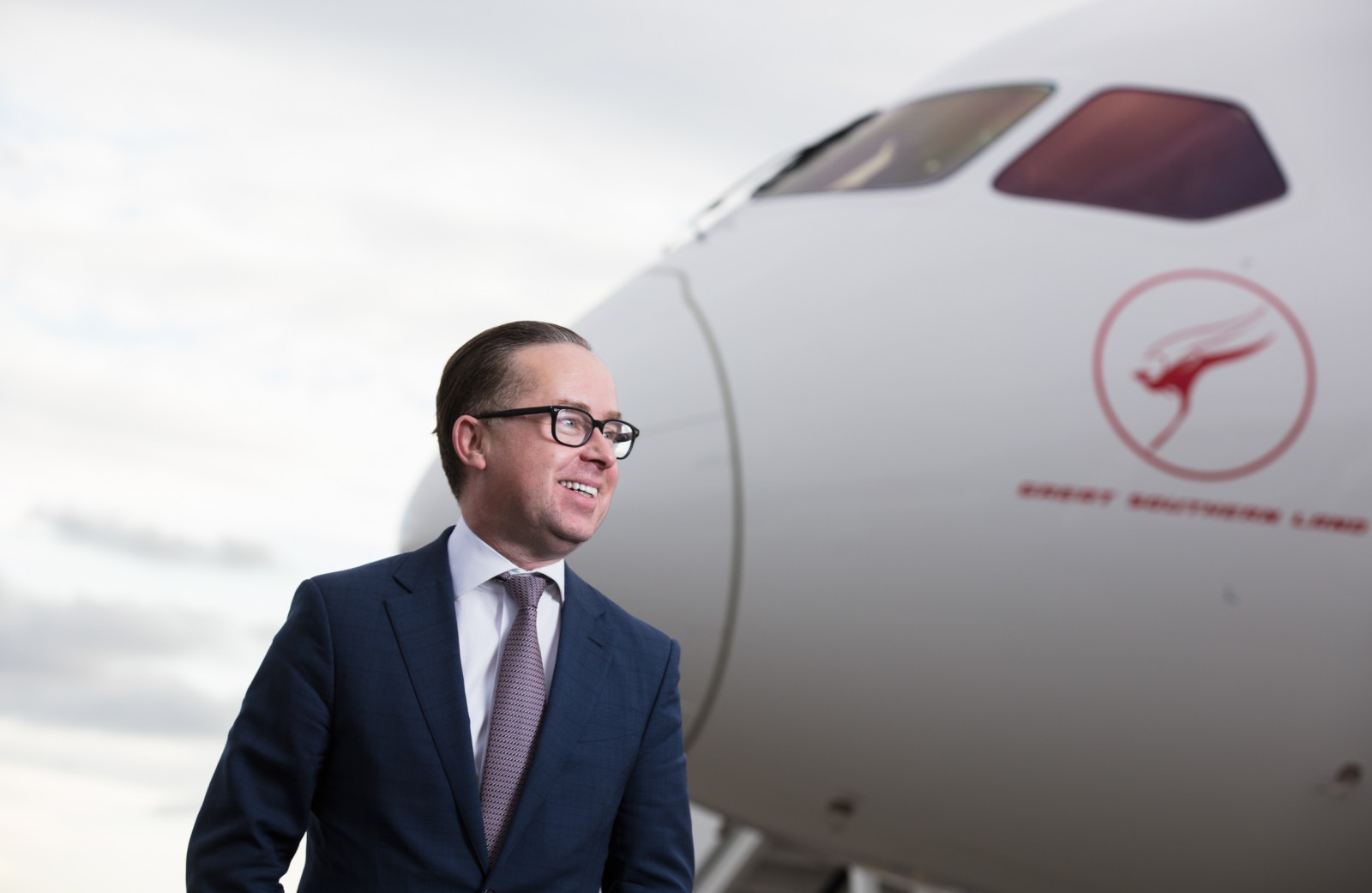Qantas Group chief executive Alan Joyce believes the airline is well positioned to keep delivering big profits in the wake of its best-ever first-half result.
The group announced a record underlying profit before tax of $A976 million, up 15 percent, and a net profit of $A607 million, up 18 percent.
Revenue was up 6 percent, to $A8.66 billion, and the company recorded a healthy 20.9 percent return on invested capital.
The upbeat results came with announcements of new planes — 18 A321neo LRs for Jetstar — a revamp of the international business lounge in Sydney, a cabin upgrade for regional turboprops and a new pilot academy.
Read: Jetstar to get A321neos LRs as Qantas flags interest in NMA.
The group’s business units were humming along with Qantas and Jetstar domestic operations posting their highest ever first-half underlying earnings of $A652 million and Loyalty hitting another record profit for the half of $A184m.
Earnings at Qantas Domestic rose 20 per cent to $A447 million, while those at Qantas International dropped by 6 ppercentto $A222m under pressure from fuel prices and increased competition.
Earnings for the Jetstar Group were up 16 per cent to $318m and Loyalty recorded another record first half profit of $A184 million.
The Group returned $A500 million to its shareholders through dividend payments as Joyce said the record result showed Qantas’s ability to keep delivering.
“After several years of consistent performance, we now have a lot of momentum behind us,’’ he said. “We’re vigilant about maintaining that momentum and we’re confident about the future it allows us to build.”
Joyce said the result was a result of investing in areas that provide margin growth and a network strategy that made sure Qantas had the right aircraft on the right route.
“Our lounges, Frequent Flyer program and initiatives like free Wi-Fi all drive customer satisfaction, and so does the network strength across Qantas and Jetstar,’’ he said .
“We’re seeing continued capacity discipline in the domestic market, coupled with a product advantage that’s delivering a significant profit share to the Group.
” This is a transition year for Qantas International and it’s setting up a bright future. We have the Dreamliner joining the fleet and important network changes on flights to Europe and across the Tasman, which will unlock significant benefits from FY19.”
Joyce said the airline was coping well with fuel price increases and chief financial officer Tino La Spina revealed the group had 81 per cent of its fuel exposure hedged for the rest of the financial year and 50 per cent hedged in fiscal 2019.
The Qantas CEO noted the current fuel price rises were the result of strong economic growth that was also a positive for the airline.
“In the aviation industry that means more people end up travelling, it means more business traffic and it means more revenue and we are starting to see that,’’ he said.
Even the decline in Australia’s resources industry that has plagued airlines in recent years had bottomed out with growth in resources sector revenue in the first half.
“So the green shoots are appearing in the resource sector and we think going forward we’re optimistic that that could be actually a good positive outcome as well,’’ Joyce said.
However, Joyce rejected a suggestion the domestic capacity restraint that had helped boost the company’s bottom line was making the market uncompetitive.
He believed the domestic market was “extremely competitive” and fares were still 20-25 percent lower than a decade ago and 30-40 percent below those in 2001.
Passengers also had the best product they’d ever seen in the domestic market with free Wi_Fi, new lounges, better seats on aircraft and now new Airbus A321neos being introduced into the Jetstar fleet.
“So from a product point of view and a price point of view it is very competitive,’’ he said.
“One of the things I will point out, it’s what Qantas is doing that’s made Qantas very profitable today. Not all of our competitors are making money. In fact a lot of them are struggling.
“The fact is that we fix the issues in our business.”
Nor did Joyce believe there was room for a new low-cost competitor in Australia.
He noted that while Qantas was doing well domestically, this was not the case for its competitor.
“ I think the best indication of whether there’s room for somebody else has been the performance of the last entry into it which is Tiger which has struggled for over now 10 years in the domestic market,’’ he said. “They’ve made money on one or two occasions during that period of time.
“So if that’s the case on the last new entrant, I think that’s a message to all new entrants that the Qantas group is very well positioned. It’s not taking anything for granted and is continuing to deliver for its customers in fares and in product.”
The executives also took a swipe at S&P Global ratings report that suggested Qantas could face a funding squeeze when it came time to order new planes.
Joyce said he believed the analysts should have waited to see the airline’s results where they would have clearly seen the group’s operating cash flow rise 50 per cent to $A1.7 billion.
He also said there was a flaw in the analysis because it did not take into account the impact on the average fleet age of 20 to 25-year-old aircraft bought specifically for use in Western Australia for fly-in, fly-out work in the resources sector.
“The company has enough cash flows to meet the requirements of our fleet replacement going forward whether that’s Project Sunrise, the replacement of the 747s, the replacement of the domestic fleet, the replacement of the Jetstar fleet,” he said. “We do plan for that in the long term.’’
























